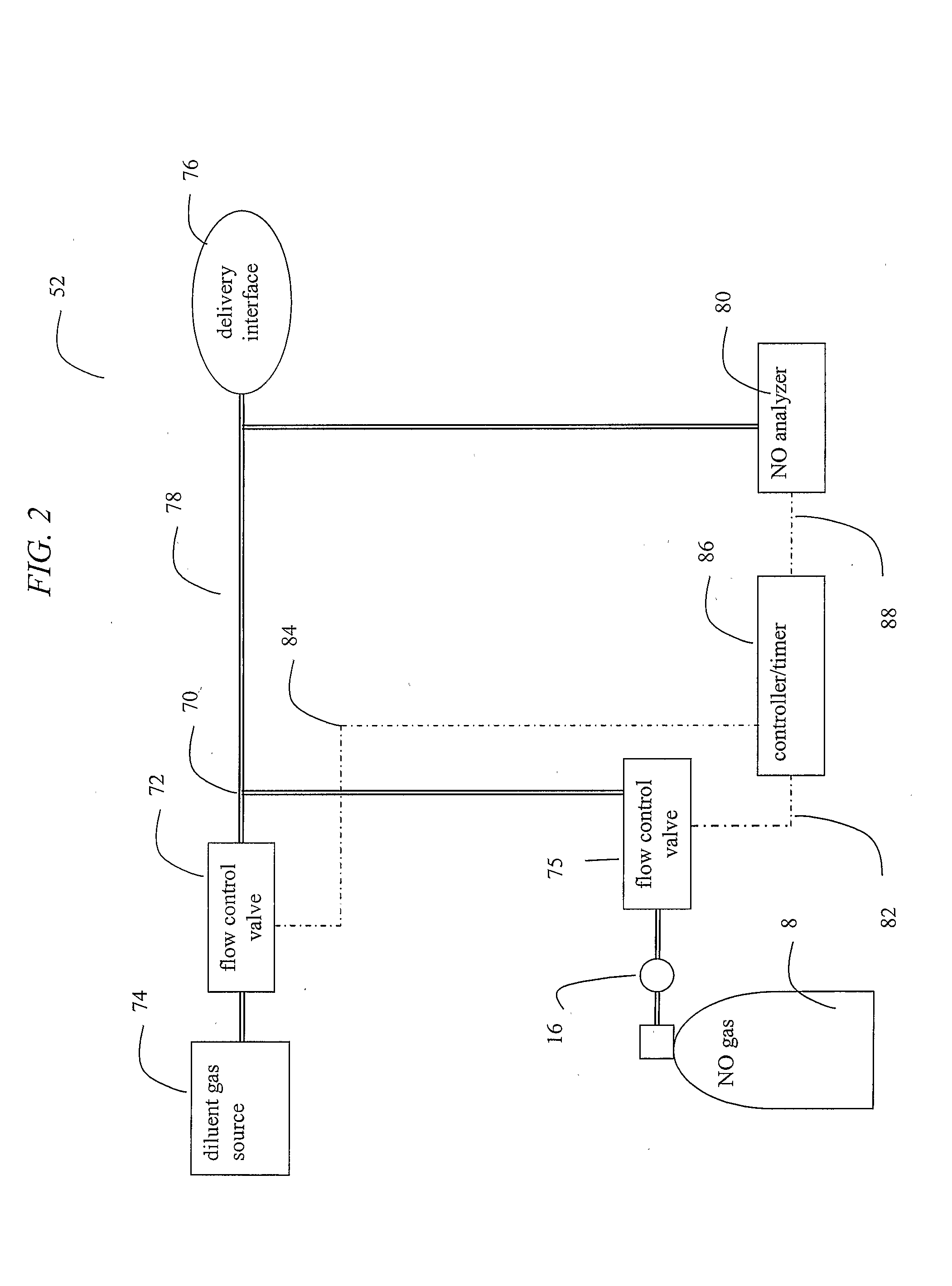Intermittent Dosing Of Nitric Oxide Gas
- Summary
- Abstract
- Description
- Claims
- Application Information
AI Technical Summary
Benefits of technology
Problems solved by technology
Method used
Image
Examples
Embodiment Construction
[0021] It is currently believed that at higher concentration, nitric oxide gas overwhelms the defense mechanism of pathogens that use the mammalian body to replenish their thiol defense system. The thiol defense system may include for example, the mycothiol for mycobacterium or glutathione for other bacteria. Once this defense mechanism is depleted, the pathogen is defenseless against the killing effects of nitric oxide. A lower dose or concentration of nitric oxide gas delivered in between the bursts of high concentration nitric oxide maintains nitrosative stress pressure on the pathogens to prevent them from rebuilding their defense system to an adequate level. Thus, a preferred therapeutic or delivery profile for combating pathogens may comprise the delivery of a first concentration of nitric oxide gas for a number of time periods interspersed with intervals in between wherein a second concentration of nitric oxide is administered during the intervals. The first concentration is ...
PUM
 Login to View More
Login to View More Abstract
Description
Claims
Application Information
 Login to View More
Login to View More - R&D
- Intellectual Property
- Life Sciences
- Materials
- Tech Scout
- Unparalleled Data Quality
- Higher Quality Content
- 60% Fewer Hallucinations
Browse by: Latest US Patents, China's latest patents, Technical Efficacy Thesaurus, Application Domain, Technology Topic, Popular Technical Reports.
© 2025 PatSnap. All rights reserved.Legal|Privacy policy|Modern Slavery Act Transparency Statement|Sitemap|About US| Contact US: help@patsnap.com



